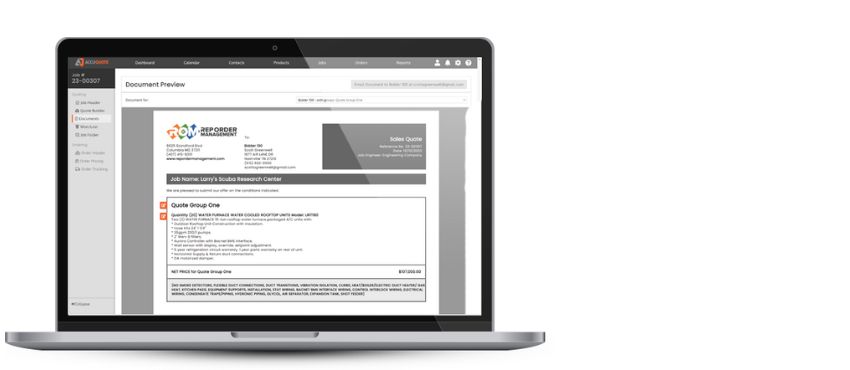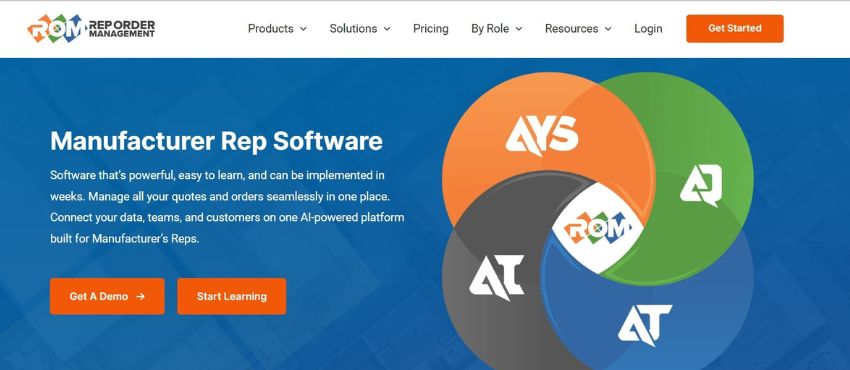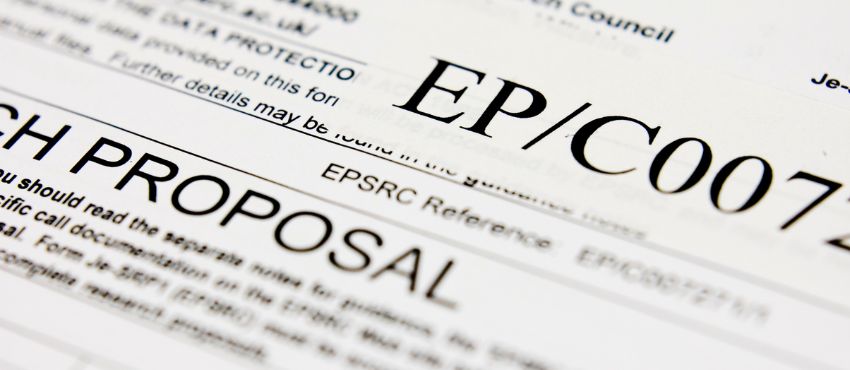Proposal vs Quote: What Is the Difference?
Welcome to the world of business communication, where every word counts and every document has a purpose. Today, we’re diving into the fascinating topic of “Proposal vs Quote.” By the end of this journey, you’ll have a clear understanding of these two crucial elements in business transactions. So, let’s get started!
- Proposal vs Quote: What Is the Difference?
- Understanding Quotes
- Understanding Proposals
- Quote vs Proposal: A Comparative Analysis
- The Impact of Industry and Location on Quotes and Proposals
- The Art of Crafting Effective Quotes and Proposals
- How to Stand Out with Your Quotes and Proposals
- Introduction to Quote and Proposal Systems
- Future of Quotes and Proposals: The Role of Technology
- Proposal vs Quote Conclusion
- FAQ’s
Understanding Quotes
First up, let’s talk about quotes. A quote, in the business context, is a document that outlines the cost of a particular service or product. It’s like a price tag, but more detailed and tailored to the specific needs of a client.
Why use a quote, you ask? Well, it’s all about transparency and trust. By providing a quote, you’re giving your client a clear picture of what they can expect to pay. This helps to avoid any unpleasant surprises down the line and builds a foundation of trust between you and your client.
In the world of business, quotes play a pivotal role. They’re not just about numbers; they’re about relationships. They’re a promise of value, a commitment to quality, and a demonstration of professionalism.
Understanding the Nuances of “Proposal vs Quote”
In the intricate dance of business transactions, the clarity and detail of your communications can significantly influence the outcome. Whether you’re drafting a proposal or a quote, understanding what to include and how to tailor it to your audience is crucial. This guide delves deep into the components of both documents, supplemented by examples and insights on the impact of industry and location.

What to Include in a Quote
A quote is a detailed breakdown of the costs associated with a service or product. It’s a straightforward document that should be as transparent and concise as possible. Here’s what it should include:
- Project Summary: A brief description of the work or products being quoted.
- Itemized Costs: Detailed listing of all charges, including materials, labor, and any additional fees.
- Total Cost: A clear total of all itemized costs.
- Validity Period: The time frame for which the quote is valid.
- Terms and Conditions: Payment terms, delivery schedules, and any other contractual details.
- Contact Information: How the client can reach you for questions or to accept the quote.
Understanding Proposals
Next on our list are proposals. A proposal is a detailed plan or suggestion put forward for consideration or discussion. It’s more than just a price tag; it’s a roadmap to a potential project or partnership.
Why use a proposal? It’s simple. A proposal allows you to showcase your understanding of the client’s needs, your approach to meeting those needs, and the value you can bring to their business. It’s your chance to shine and convince the client that you’re the right choice for the job.
In business transactions, proposals are your ticket to new opportunities. They’re your platform to showcase your skills, creativity, and commitment to delivering value.
What to Include in a Proposal
A proposal is more comprehensive than a quote, providing a roadmap for a project or partnership. It should articulate how you plan to address the client’s needs and the value you’ll bring. Include the following:
- Executive Summary: An overview of the proposal’s purpose and your understanding of the client’s needs.
- Scope of Work: Detailed description of the services or products offered.
- Methodology: How you plan to achieve the outlined goals.
- Timeline: Project milestones and delivery dates.
- Cost Breakdown: Similar to a quote but tied to the deliverables and milestones.
- Case Studies or Examples: Demonstrations of past success in similar projects.
- Terms and Conditions: Payment terms, confidentiality agreements, and other legalities.
- Contact Information: Necessary details for further communication.

Quote vs Proposal: A Comparative Analysis
Now that we’ve explored quotes and proposals individually, let’s put them side by side. While both are essential tools in business communication, they serve different purposes and are used in different scenarios.
Quotes are all about the cost. They’re used when the client already knows what they want, and they just need to know how much it’s going to cost. Proposals, on the other hand, are about the plan. They’re used when the client is looking for a solution to a problem, and they need to see your approach, your methodology, and your vision.
Choosing between a quote and a proposal depends on the situation. If it’s a straightforward request, a quote might suffice. But if it’s a complex project that requires a detailed plan, a proposal would be more appropriate.
Table comparing Quotes and Proposals:
| Quote | Proposal | |
|---|---|---|
| Definition | A document outlining the cost of a service or product. | A detailed plan or suggestion is put forward for consideration or discussion. |
| Purpose | To provide a clear picture of the cost to the client. | To showcase an understanding of the client’s needs and the approach to meeting those needs. |
| When to use | When the client knows what they want and needs to know the cost. | When the client is looking for a solution to a problem and needs to see your approach |
| Role in transactions | Builds transparency and trust by avoiding surprises in cost. | Showcases skills, creativity, and commitment to delivering value, leading to new opportunities. |
| Real-life application | A graphic designer provides the cost for a logo design. | A digital marketing agency outlining a proposed marketing strategy for a potential client. |
In the end, whether you’re providing a quote or a proposal, remember that it’s not just about the numbers. It’s about building relationships, showcasing your value, and establishing trust. So, make every word count!

The Impact of Industry and Location on Quotes and Proposals
The industry and location significantly influence the structure and content of quotes and proposals. For instance, in construction, quotes might include a detailed breakdown of materials, labor, and other direct costs, while in software development, proposals often focus on project timelines, technical specifications, and team expertise. Understanding these nuances can help tailor your documents to meet industry expectations and address specific challenges related to geographical location, such as shipping costs or local regulations.
Industry Examples
- Manufacturer Reps: Exclusivity and territory, may be included in a quote or agreement indicating that the manufacturer representative has the exclusive right to sell the product in a certain territory or market.
- Construction: Detailed material and labor costs and adherence to local building codes.
- Software Development: Emphasis on project phases, technical milestones, minimum viable product, and support services.
Location Considerations
- Local vs. International: Considerations for shipping, import duties, or remote collaboration challenges.
- Regulatory Environment: Compliance with local laws and regulations affecting project delivery or product supply.
By incorporating these elements into your quotes and proposals, you not only demonstrate professionalism but also a deep understanding of your client’s unique context, setting the stage for successful business relationships.
The Art of Crafting Effective Quotes and Proposals
Creating compelling quotes and proposals is an art. It requires a deep understanding of the customer’s needs, a clear vision of the solution, and the ability to communicate both effectively. Here are a few tips:
- Understand your customer: Before you start writing, take the time to understand your customer’s needs, expectations, and concerns. This will help you tailor your quote or proposal to their specific situation.
- Be clear and concise: Avoid jargon and unnecessary details. Your quote or proposal should be easy to understand, even for someone who’s not familiar with your industry.
- Use technology: Tools like Rep Order Management’s Quote Builder can streamline the process of creating quotes and proposals. They can help you create accurate, professional, and consistent documents quickly and efficiently.
How to Stand Out with Your Quotes and Proposals
Your quotes and proposals are not just documents; they’re your chance to stand out from the competition. Here are a few strategies to make them more effective:
- Show your value: Don’t just list your services or products. Explain how they can solve the customer’s problem or meet their needs.
- Be professional: Your quote or proposal is a reflection of your business. Make sure it’s well-written, well-structured, and free of errors.
- Follow up: Don’t just send your quote or proposal and wait. Follow up with the customer, answer their questions, and show them that you’re committed to their satisfaction.

Introduction to Quote and Proposal Systems
Quote and proposal systems can significantly improve your business communication. They allow you to create, manage, and track your quotes and proposals in one place. This not only saves time but also ensures consistency and accuracy.
Rep Order Management (ROM), for instance, offers a Quote Builder named AccuQuote, that allows you to create quotes quickly by reusing old quotes or creating new templates. It also provides a Job Folder that automatically stores a copy of every quote you create and allows you to link all job documents for that job in one convenient location.
Moreover, ROM’s AccuQuote feature can save you tons of time by reusing Quote Content. It automatically calculates cost, sales price, and profit, and you can dump the whole quote into a spreadsheet. With AccuQuote, you don’t need spreadsheets or Word docs to generate a quick, professional quote!
Whether you’re crafting a quote or a proposal, remember that it’s not just about the numbers. It’s about understanding your customers’ needs, showcasing your value, and building a relationship of trust and transparency.
Future of Quotes and Proposals: The Role of Technology
As we step into the future, technology continues to revolutionize the way businesses operate, and the realm of quotes and proposals is no exception. The advent of quote and proposal systems has streamlined the process, making it quicker, more efficient, and more accurate.
These systems, like ROM, offer a plethora of benefits. They allow businesses to create professional and consistent quotes and proposals quickly, store and manage all job-related documents in one place, and even automate calculations and reporting. This not only saves time but also enhances the quality of business communication.
Choosing the right quote and proposal system for your business depends on your specific needs. Factors to consider include the size of your business, the complexity of your projects, and your budget. Rep Order Management, for instance, is a robust solution that offers a wide range of features, making it suitable for businesses of all sizes and industries.

Proposal vs Quote Conclusion
In this journey through the world of “Proposal vs Quote,” we’ve explored the definitions, uses, and roles of quotes and proposals in business transactions. We’ve delved into the impact of industry and location, the art of crafting effective quotes and proposals, and the role of technology in shaping the future of this realm.
Remember, whether you’re providing a quote or a proposal, it’s not just about the numbers. It’s about understanding your customer’s needs, showcasing your value, and building a relationship of trust and transparency. So, make every word count!
Now, it’s your turn to share your thoughts
Have you used quotes and proposals in your business? What challenges have you faced, and how have you overcome them? Share your experiences in the comments below.
And if you found this blog post helpful, don’t keep it to yourself. Share it with your networks and help others navigate the fascinating world of “Proposal vs Quote.” Together, we can make business communication more effective, more transparent, and more human.
FAQ’s
A quote is a document that outlines the cost of a particular service or product, providing a clear picture of what the client can expect to pay. A proposal, on the other hand, is a detailed plan or suggestion put forward for consideration or discussion, showcasing the provider’s understanding of the client’s needs and the approach to meeting those needs.
Quotes are used when the client already knows what they want, and they just need to know how much it’s going to cost. Proposals are used when the client is looking for a solution to a problem, and they need to see your approach, your methodology, and your vision.
Industry and location can significantly influence the use of quotes and proposals. For instance, in the construction industry, a quote might include a detailed breakdown of materials, labor, and other costs, while a proposal in the software industry might focus more on the project timeline, technical specifications, and the team’s expertise.
Understanding your customer’s needs, being clear and concise, and using technology like Rep Order Management’s Quote Builder can help create compelling quotes and proposals. It’s also important to show your value, maintain professionalism, and follow up with the customer.
Quote and proposal systems allow you to create, manage, and track your quotes and proposals in one place. This not only saves time, but also ensures consistency and accuracy. For instance, Rep Order Management (ROM) offers a Quote Builder named AccuQuote, that allows you to create quotes quickly by reusing old quotes or creating new templates.
Technology continues to revolutionize the way businesses operate, and the realm of quotes and proposals is no exception. The advent of quote and proposal systems has streamlined the process, making it quicker, more efficient, and more accurate. These systems allow businesses to create professional and consistent quotes and proposals quickly, store and manage all job-related documents in one place, and even automate calculations and reporting.

